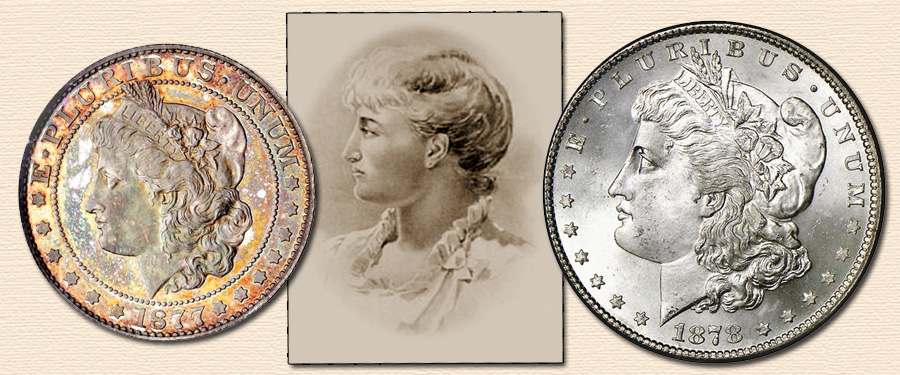
Part I: The Background
The story of the lady on the Morgan silver dollar is a twice-told tale, always interesting, it seems, just as the dollars themselves have perennial popularity.
At the Mint, Director Henry R. Linderman was dissatisfied with the artistic talent, or lack thereof, of Chief Engraver William Barber. Seeking to introduce better designs, he corresponded with Deputy Master C.W. Fremantle of the Royal Mint in London, seeking a recommendation for an engraver. George T. Morgan was recommended, and in 1876 he emigrated from England to the United States.
In Philadelphia, Morgan enrolled at the Academy of Fine Arts to enrich his knowledge of American art and to meet others in his field. It was at about this time that he was introduced by Thomas Eakins, Philadelphia artist, to Anna Willess Williams, a local teacher. Morgan persuaded her, with some difficulty, to pose for the Liberty head that Linderman wanted for his silver coinage. According to an article in The Numismatist of May 1896, there were five sittings in November 1876. The original designs were intended for use on the half dollar. At the time, no coinage of silver dollars was contemplated, at least not for the present. However, political stirrings suggested that new dollars might be in the offing.
In the meantime, her image was used on several different pattern half dollars of 1877, all of which are very rare today.
The Bland-Allison Act of February 28, 1878, resulted in Uncle Sam making new silver dollars by the millions, unwanted and unneeded, but a boon to western silver mining interests. A design was needed, and quickly. Morgan’s half dollar design was picked, dollar dies were made, and coins were rushed into production, the first striking being within two weeks!
More on the “Silver Dollar Girl” in my next blog.





